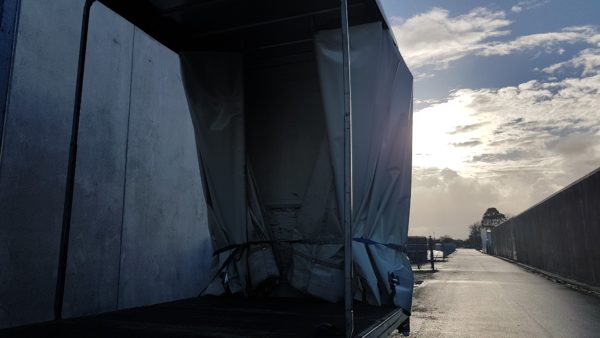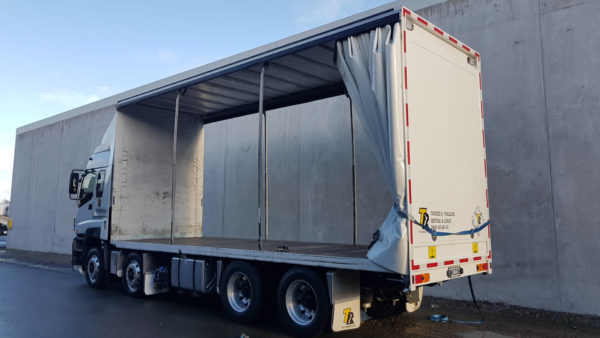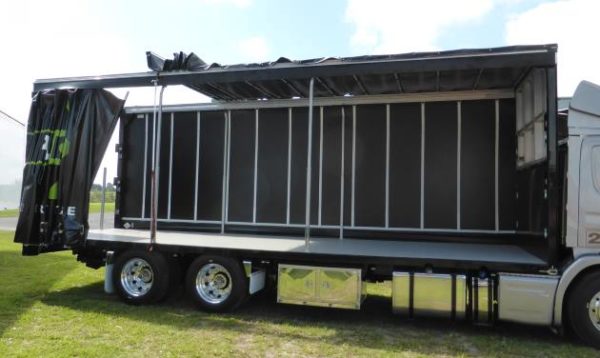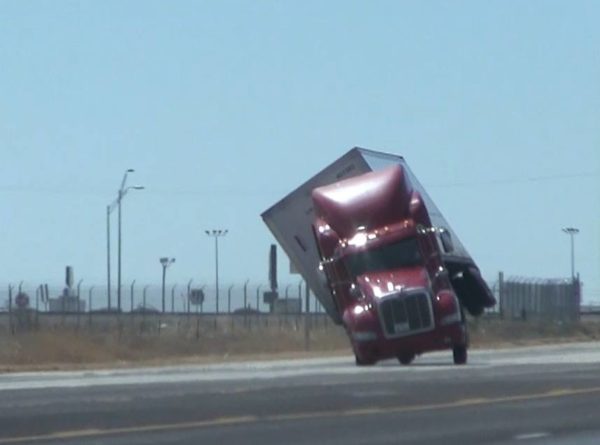A curtainside or tautliner lorry can easily be blown over by a strong gust of wind when it is empty or carrying a very light load. A wind gust over 60mph can put 20-30 tons of pressure on the side of your semitrailer, blowing it sideways or (if it exceeds the static roll threshold) blowing it over.
The risk is slightly higher for pull trailers rather than semitrailers as these trailers are not roll-coupled (i.e. they can roll without the towing lorry rolling). With a semitrailer, the wind has to blow both the cab and the trailer as they are roll-coupled.
During high winds, avoid travelling across exposed structures such as bridges and across flat areas of land where there are few trees or other features to break up the wind with your curtains closed. Your options are either:
- Wait until the wind has died down
- Choose another route that isn’t so exposed
- Tie your curtains back so that the wind can blow through the trailer’s structure (obviously, only if you’re empty or your load is otherwise weather-proof and securely lashed to the deck of the trailer.
If you get caught out in high winds try to find a sheltered place to wait it out. Angle your lorry and trailer so it is away from the wind; this reduces the risk of any wind-borne object smashing through the windscreen of your cab.
How to tie your curtains back

Throw a couple of straps over the top of the lorry or trailer to stop the rails from popping out – this can happen if there’s a lot of wind pressure on the rear of the lorry which flexes the roof rails.


Checking the weather
It’s good practice to check the weather on your route before you set off. If it looks like it’s closing in, check it again when you stop, especially if a later part of your route will take you across high ground, flat plains or exposed bridges. Check the Met Office website for UK weather warnings.
If advice is given by the police or any weather service not to travel, take the advice.
Other precautions for your lorry in high winds
- When opening the side of your lorry, be extra careful that the wind doesn’t take the curtain pole and hit you in the head as it can easily knock you out
- Open the side away from the wind first
- If you are driving in a tailwind, your braking distance may be extended due to the extra forward pressure of the wind
- If you are being unloaded or loaded by a forklift when it’s windy, stay well clear as the wind can tip a forklift. It’s best not to load and unload in high winds, so you’ll need to assess the risk to you and the forklift operator
- The curtain should not be left to flap around
- When unloading, ensure that anything you are unloading can’t be affected by the wind.

